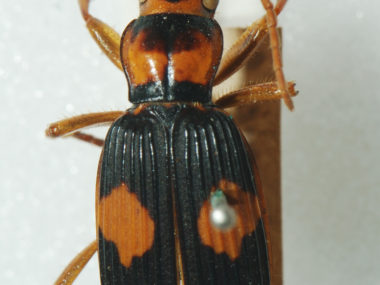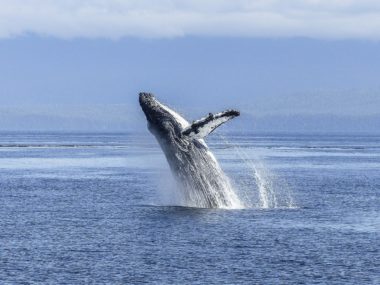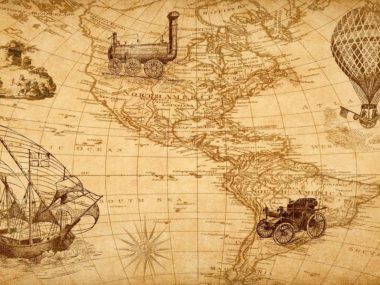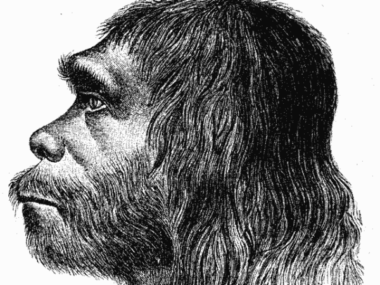In part 1 of this series, I concluded that the general structure of human and ape skulls seems to converge towards a common plan. I also proposed that a commitment to a general “common design” apologetic doesn’t provide all the answers, and that it may be more fruitful to look to principles in structural design. It is surprising for most creationists to learn that the notion of structural continuity existing across the entire class of vertebrates (in other words, some kind of upward progression of vertebrates connected by common structures) was first proposed by creationists before it was by Charles Darwin.1
The following article has been reblogged with permission from Creation Unfolding. The views expressed reflect those of the author, and not necessarily those of New Creation.
Richard Owen was one of the most well-known and respected biologists of his day, and like many scientists of that time, he was a Christian and a creationist. Owen was one of the first to recognize a structural thread that seemed to weave its way through the vertebrates, and was convinced that some kind of sequence existed from lower vertebrates all the way to higher vertebrates, including man. Of course, as a creationist, Owen did not believe in what at that time was called transmutation and later evolution. Owen says this:
“I never asserted that creation (or the appearance of a new or modified fauna) was not by law. But what law? Not, I may say, of natural transmutation—not by turning fishes into reptiles, whales into pachyderms, or monkeys into men, in the way of natural generation [Natural Selection], but by a higher law, of which we may reach the conception hereafter, as you have reached the conception of an archetypal form.”
Owen 1894, p. 96
When Owen says that “creation is by a law,” he means that the continuity one sees in the vertebrates, starting from fish, moving up to amphibians and reptiles, then to mammals and finally to man, should not be understood using laws of evolution, but should rather be grounded in a creative plan that linked organisms together until they pinnacled in the creation of man.
Owen’s model of continuity was built on something he called the “Archetype.” [See figure below.] The archetype was an abstract Idea in the mind of God from which God built all vertebrates in a progressive sequence that ended with man. Simplistically, Owen’s fundamental archetypal design was first and foremost a single vertebra, and it was from this conceptual bone that God then designed an entire archetypal skeleton. This conceptual skeleton thus became the blueprint upon which all other vertebrates, including humans, were built. He says this:
“Now however the recognition of an ideal exemplar for the vertebrate animals proves that the knowledge of such a being as man must have existed before man appeared. For the divine mind which planned the archetype also foreknew all its modifications.”
Owen 1894, p. 317

Now keep in mind that metaphysical ideas such as this were pretty popular in late 18th and early 19th century scientific circles with such notables as Johann von Goethe (1749-1832), Etienne Geoffroy St. Hilaire (1772-1844), and Karl Friedrich von Baer (1792-1876), among many others. All of these scientists were influenced by a philosophical system of thought called Naturphilosophie (nature philosophy) which itself was equally influenced by the theory of Forms or Ideas put forward by Socrates and later by Plato.
These metaphysical solutions to biological questions fell out of favor, however, after Darwin published his book on the Origin of Species. Scientists were looking for real biological ancestors, and so dismissed abstract or conceptual ones even if they were designed by God. You will be surprised to discover, as I was, that Charles Darwin, so passionately committed, as he was, to materialist-only explanations actually usurped Richard’s Owen’s Archetype and made it into a real evolutionary ancestor for all vertebrates. Listen to what Stephen J. Gould says:
“Darwin had struck a blow to the heart of Owen’s system by substituting a flesh and blood ancestor, a concrete beastly thing, for the lovely abstract, Platonic archetype.”
Gould 2002, p. 326
Historians of science, including Gould, all agree that Darwin’s inspiration for a single common ancestor actually came from Owen’s archetype. Owen is even credited for first describing “homologous” structures, a word that today relates similar anatomical features to a single common ancestor. Owen, however, believed that homologous structures should point the scientist back to a single conceptual design, not a single common ancestor.
This is utterly fascinating because it means Charles Darwin utilized a creationist’s idea and even his terminology to formulate and describe what we now call the universal common ancestor! Notably, Owen’s archetype and Naturphilosophie in general not only fell out of favor in the sciences, it didn’t even show up in Christian circles anymore. For those ardent creationists out there, when was the last time you heard of Richard Owen’s archetype or thought about 19th century Naturphilosophie?
In conclusion, and in preparation for part 3, continuity across all vertebrates is not a singularly Darwinian idea; creationists were thinking about these things at about the same as evolutionists. Christians today need to rethink the idea of complete discontinuity between vertebrate groups, and should instead realize that both discontinuity AND continuity may be the way forward to a better understanding of biological form.
Learn More About Common Design
References
Gould, Stephen Jay. 2002. The Structure of Evolutionary Theory. Cambridge Massachusetts, Belknap Harvard.
Owen, Richard. 1894. The Life of Richard Owen: Volume II. Cambridge University Press, New York.
Footnotes
- Other early evolutionists did discuss these ideas before Owen, but Owen published his ideas on this subject before Darwin. ↩︎












as in part one I said its simple. We can’t have a bodyplan showing our true idenity like the rest of biology. I like owens attempts but it still is just about kinds and bigger laws uniting all. that is common design concepts. Yes we all had eyeballs on creation week though all eyeballs are alike.
I Its a slight option the primate bodyplan is the height of biology for a body being used. then we have that and a eee bnit better. indeed no other body in biology would we choose other then the primate if e could choose. WE have the best one. it might be the apex in structural design. however i still think we are and must rent.
Mr. Coulson,
I would like your permission to include Parts 1 and 2 of this article in a free on-line creation science text book I am assembling for Christian homeschoolers. ICR, Creation, and other organizations have already agreed to my use of their articles.
Craig Myers
Salem Oregon
Blessings on your family
Hi Craig, yes, that will be fine. Could you please send me a link to some of your material? Thanks
Is there any reason within the Creationist Paradigm, that Apes and Humans are in fact members of the same Kind or Family I’m not saying I think they are. But if we find strong evidence that we are part of the same Kind would that not have an alternative Creationist understanding. Obviously the creation interpretation would Have a group of Humans descended from Noah devolving or mutating down to that form as part of the curse. The question is is their any Biblical reason why that could not be the case. I think the whole Simian Kind or family/group is too diversified to be a part of ManKIND, Would that not be an option
Humans and apes cannot be part of the same “created” kind, but they can have a similar structural plan.
OK what are the reasons biblically that it is not even a possibility If the created Simian Kind are specifically mentioned in the record pre-flood that would be a reason. The only mention of Apes is post flood 1 Kings 10:22. as being brought over by the King. Biblically wise (not geologically wise) Other than an assumption that they can not be the same Kind, what are the reasons Biblically Again I don’t think they are part of the same kind but a their own Simian Kind. Assumptions can be correct or incorrect and we like the Darwinist have assumptions
Hi Jeff, I’m not sure what it is you’re trying to say? The Bible says that Adam was created from the dust of the ground. So that means, humans are a single “created” kind. But, in God’s eternal design, both humans and apes, it seems, do share a similar structural plan. In other words, God could have made humans have a completely different structure, like nothing else created, but he did not. Hope that helps.
Did part 3 ever come out? I just stumbled on this series and am really enjoying it, but I can’t seem to find the next part?
Unfortunately, Dr. Coulson hasn’t finished the series yet. If you enjoyed the article, you might like to check out his blog: https://creationunfolding.com/blog/